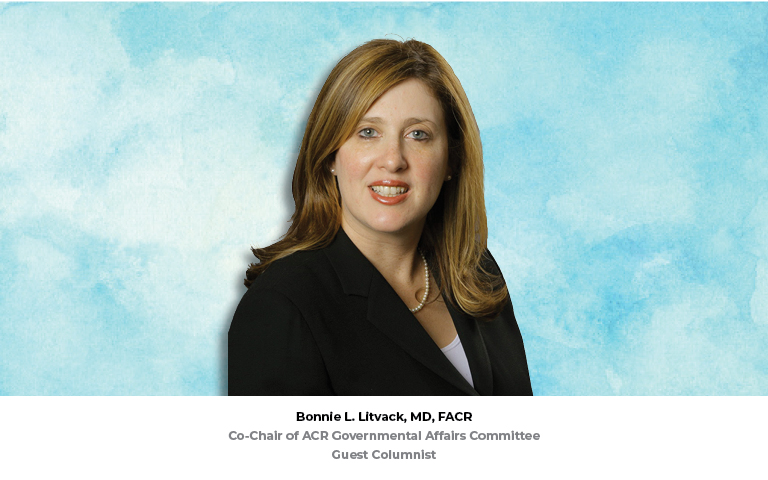In statehouses across the country, efforts are underway that, if successful, will legislatively undermine, disrupt and hamper the healthcare team, putting patients at risk. This is not peripheral to radiology. The language of bills being proffered includes the ability to “order, perform and interpret” imaging.
Healthcare is a team effort that is optimized when the team members, including the patients, work together. Radiologists, including interventional radiologists and radiation oncologists, know this well. Collectively, we work with every specialty in medicine and fully understand the power of the team. Our radiologists, interventionalists and radiation oncologists are trained with a team focus — to communicate and share observations, expertise and decision-making responsibilities. Our teams are diverse and share a common goal of providing the safest, best possible care.
Effective teams have leaders, whether in healthcare, sports or other arenas. In healthcare, those leaders are the physicians, who have seven years or more of postgraduate education and at least 10,000 hours of clinical experience.
Over the past decade, there have been movements to disrupt the physician-led team with calls for non-physician healthcare practitioners to practice independently. During the height of the COVID-19 pandemic, many states bypassed the usual checks and balances on scope-of-practice changes to navigate through the crisis. Those pandemic flexibilities are now being used as an excuse to accelerate independent practice.
The ACR is deeply committed and actively engaged in defending patients’ access to team-based, physician-led care. Over the past year, the American College of Radiology Association® (ACRA) has established a scope-of-practice fund that has awarded grants to a half-dozen state radiological societies to help fund efforts to fight SOP including independent practice, direct billing by non-physicians and reductions in radiologist oversight.
The ACR is a member of the AMA Scope of Practice Partnership and stands united with the house of medicine in its resolve to defend physician-led healthcare. The myths must be dispelled, the science disseminated and the patients’ voices heard. As we advocate for the best care for our patients, consider these points:
- Independent practice has not filled the primary care access gap in underserved and rural communities.1 In states with independent practice, nurse practitioners (NPs) have not preferentially chosen to locate or practice in underserved or rural areas. Having a lower standard of education and training for rural and underserved areas perpetuates health inequities.
- Independent practice is not the solution to rising healthcare costs. The JACR®, which analyzed skeletal X-ray utilization for Medicare beneficiaries from 2003 to 2015, found ordering rose by more than 400% among non-physicians, primarily NPs and physician assistants.2 Additionally, Hattiesburg Clinic’s value-based care analysis showed that care provided by non-physician providers working on their own patient panels was more expensive than care delivered by doctors.3
- An AMA survey indicated patient preference for physician-led care.4 Conducted in 2012, research by Baselice & Associates on behalf of AMA Scope of Practice Partnership found that patients overwhelmingly want a coordinated approach to healthcare, with a physician leading the team. Among the findings:
-
91% said a physician’s years of education and training are vital to optimal patient care — especially in the event of a complication or medical emergency.
-
86% said patients with one or more chronic diseases benefit when a physician leads the primary healthcare team.
-
80% prefer a physician to have primary responsibility for the diagnosis and management of their healthcare.
-
75% prefer to be treated by a physician — even if it takes longer to get an appointment and costs more.
-
Healthcare silos are not in the best interests of the patient. The words "independent" and "team" are mutually exclusive. There is no "I" in team. "Independence" fragments our teams, puts our team members at odds, creates confusion of patients, drives up healthcare costs and, most importantly, threatens quality and safety. In medicine, we have always looked to science to guide our path forward, and that data supports the team — the physician-led team.

